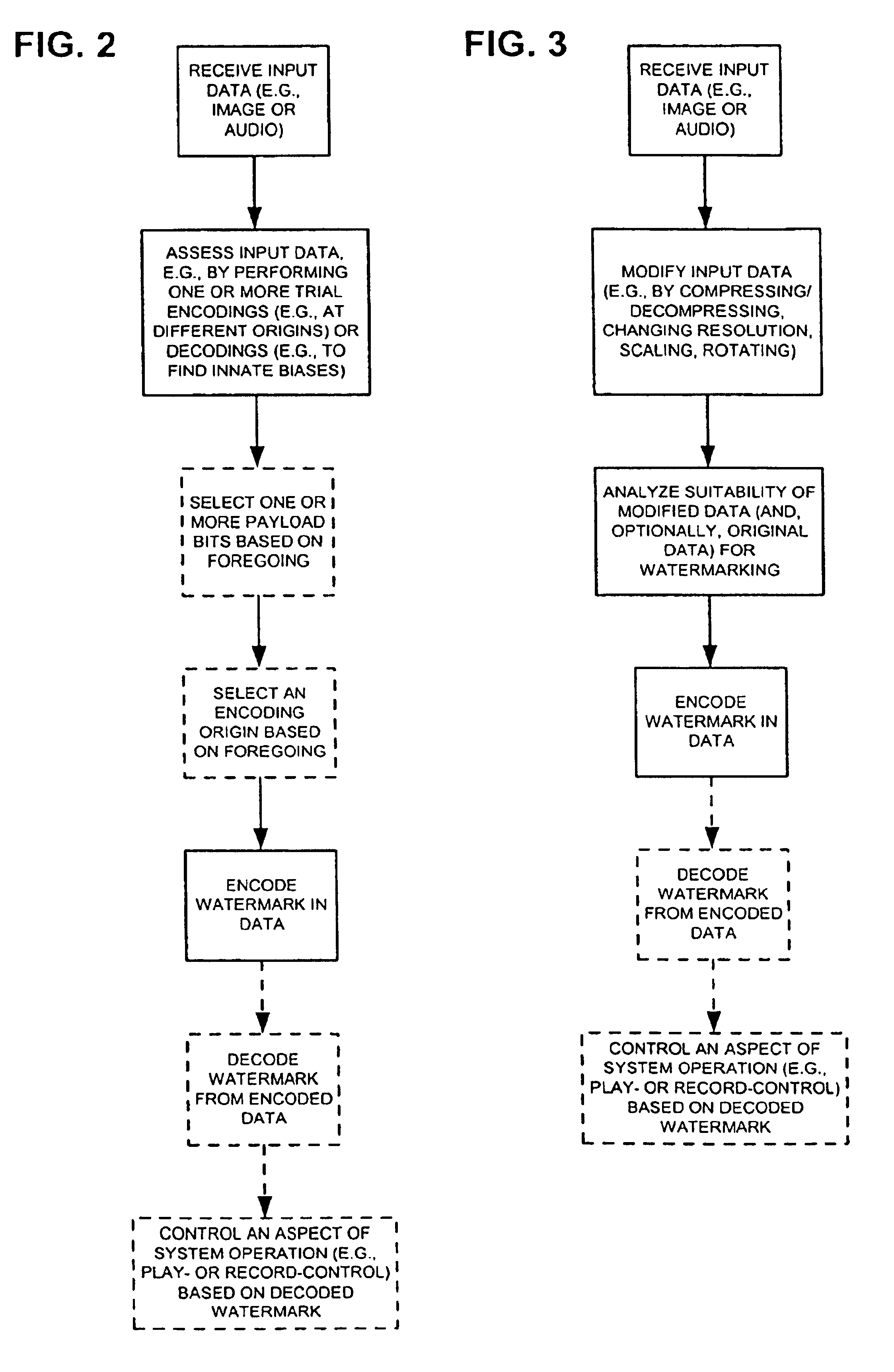Watermark encoding using arbitrary features
a technology of arbitrary features and watermarks, applied in the field of watermark encoding, can solve the problems of process becoming more difficult, affecting the effect of the underlying image signal,
- Summary
- Abstract
- Description
- Claims
- Application Information
AI Technical Summary
Benefits of technology
Problems solved by technology
Method used
Image
Examples
Embodiment Construction
[0008]To mitigate the problem of detecting a watermark signal in the presence of a much-stronger image signal, certain choices are made early in the process—at the embedding operation.
[0009]The “noise” introduced by the image signal doesn't always hurt the detection process. Sometimes innate biases in pixel values, or other image characteristics (e.g., DCT, wavelet, or other transform coefficients), can actually serve to accentuate the watermark signal and thereby simplify detection.
[0010]Starting with a perhaps overly simple case, consider an image prior to watermark encoding. If the un-encoded image is analyzed for the presence of a watermark, none should be found. However, there are cases in which the innate image characteristics sufficiently mimic a watermark signal that a phantom watermark payload may nonetheless be decoded. If the application permits, the user may then encode the image with this watermark payload. This encoding just accentuates the phantom data signal coincide...
PUM
 Login to View More
Login to View More Abstract
Description
Claims
Application Information
 Login to View More
Login to View More - R&D
- Intellectual Property
- Life Sciences
- Materials
- Tech Scout
- Unparalleled Data Quality
- Higher Quality Content
- 60% Fewer Hallucinations
Browse by: Latest US Patents, China's latest patents, Technical Efficacy Thesaurus, Application Domain, Technology Topic, Popular Technical Reports.
© 2025 PatSnap. All rights reserved.Legal|Privacy policy|Modern Slavery Act Transparency Statement|Sitemap|About US| Contact US: help@patsnap.com



